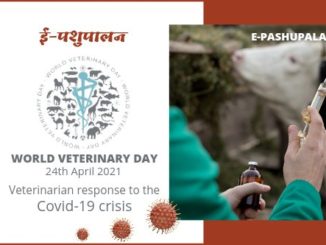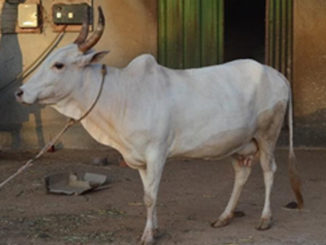Since animals were regarded as a part of the same cosmos as humans, it is not surprising that animal life was keenly protected and veterinary medicine was a distinct branch of science with its own hospitals and scholars. Animals received good medical care in ancient India. They were cared because they were of paramount importance to the individual, the society and the king, in times of peace as in times of war. Life depended on cattle in the homes for milk, as much as in the fields for agricultural operations. During those days, physicians treating human beings were also trained in the care of the animals.
Records in ancient Vedas state that medical science arose from veterinary sciences. Vedas contain lots of information on the treatment of man as well as animals. Indian medical treatises like Charaka, Susruta and Harita Samhitas contain chapters or references about care of the diseased as well as the healthy animals. There were, however, physicians who specialized only in the care of the animals or even in one class of animals; the greatest of all of them was Shalihotra, the father of veterinary sciences.
Shalihotra (c. 2350 BCE) is described to be the son of a Brahmin sage, Hayagosha and is considered the founder of veterinary sciences. He is said to have lived in Sravasti (modern Sahet-Mahet on the borders of Gonda and Bahraich districts in the Uttar Pradesh), a place associated with Buddha and Mahavira in 6th century BCE.. Some other sources describe Shalihotra to have lived in Salatur, a place near Kandahar. Shalihotra and Agnivesha are described to be the pupils of the same teacher; others say that Susruta was Shalihotra’s pupil.
Shalihotra is known to have been a specialist in the treatment and other aspects of the horses. He composed a treatise called- Haya Ayurveda or Turangama-Sastra or Shalihotra samhita (encyclopedia of the physician Shalihotra), a work on the care and treatment of the horses. True to Indian tradition, knowledge embodied in Ayurveda is also said to have been revealed to Shalihotra by Brahma himself, the fountain head of all knowledge. This work of Shalihotra was later translated into Persian, Arabic, Tibetan and English languages. This work described equine and elephant anatomy, physiology, surgery and diseases with their curative and preventive measures. It elaborated on the body structures of different races of horses, and identified the structural details by which one can determine the age of a horse. Two other works, namely Asva-prashnsa and Asva-lakshana sastram are also attributed to Shalihotra. Haya-Ayurveda was accepted as a standard work on the subject in ancient times. Some chapters of it have been quoted in Agni-Purana, and Matsya and Garuda Puranas also refer to this treatise. The fame of Shalihotra and his work spread so much that in certain places the word Salotri still stands for a horse doctor. Some of the later authors have named their veterinary works after Shalihotra and others have based their work on his samhita.
Compositions of Shalihotra
1. Haya Ayurveda or Turangama-Sastra or Shalihotra samhitahors
It consists of 12,000 verses and is divided into eight parts. It has been translated into Persian, Arabic, Tibetan and English languages. This work described equine and elephant anatomy, physiology, surgery and diseases with their curative and preventive measures. It elaborated on the body structures of different races of horses, and identified the structural details by which one can determine the age of a horse.
2. Asva-prashnsa
3. Asva-lakshana sastram

Some of the later authors have named their veterinary works after Shalihotra and others have based their work on his Samhita. Subsequent generations copied, revised and added to Shalihotra’s text: one of these later texts is shown in the illustration above. Hence the term Shalihotra refers to similar texts in a tradition.
Comments
Greatest physician recognized in Vedas is God. Vedas contain lots of information on the treatment of man as well as animals. Various Gods like Shiva are ancient masters of medical science and various books written as medicine with them as curers. Since animals were regarded as a part of the same cosmos as humans, it is not surprising that animal life was keenly protected. Horses and elephants were vital assets in the never ending warfare of the ancient world. In ancient India, physicians were trained in the care of animals as well as in curing human beings. Charaka, Susruta and Harita Samhitas also contain some chapters on diseased animals and healthy animals. They were not only specialists in this science but also specialists in one class of animals.
In ancient India, there has been only one sage by name Shalihotra and he was greatest. Shalihotra lived in early vedic period (1800 BC). He is described as Durgarasi, son of Surgarasi known as Shalihotra.






2 Trackbacks / Pingbacks